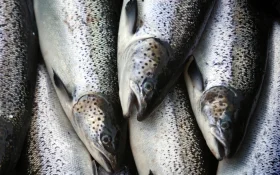The United Nations reported on Friday that for the first time in history, the total global volume of fish, shrimp, clams, and other aquatic animals harvested through farming has surpassed the amount caught in the wild from the world’s waters.
According to the latest report on fisheries and aquaculture by the U.N.’s Food and Agriculture Organization (FAO), the global catch and harvest brought in more than 185 million tons of aquatic animals in 2022, the most recent year for which data is available.
Experts had anticipated this milestone in human history, as the catches from fisheries have largely remained stable over the past three decades, primarily due to natural limitations.
Manuel Barange, head of FAO’s fisheries and aquaculture division, attributed the growth of aquaculture to an increased recognition of the nutritional benefits, such as Omega 3 and other micronutrients found in aquatic animals, and the lower environmental impact compared to food derived from land animals.
The FAO report revealed that the total amount of aquatic animals captured in the wild decreased from 91.6 million tons in 2021 to 91 million tons in 2022.
In contrast, global production from aquaculture rose from 91.1 million tons in 2021 to 94.4 million tons in 2022. Asia accounted for more than 90% of all aquaculture production of aquatic animals.
Approximately 90% of aquatic animals that are farmed or fished are used for human consumption, while the remaining 10% is used for other purposes, such as feed for other animals or fish oils.
The most commonly captured fish in the world’s oceans, seas, rivers, lakes, and ponds include Peruvian anchovies, skipjack tuna, and Alaskan pollock.
Among the most harvested aquatic animals are freshwater carp, oysters, clams, shrimp, tilapia, and prawns.
The Associated Press contributed to this article.
